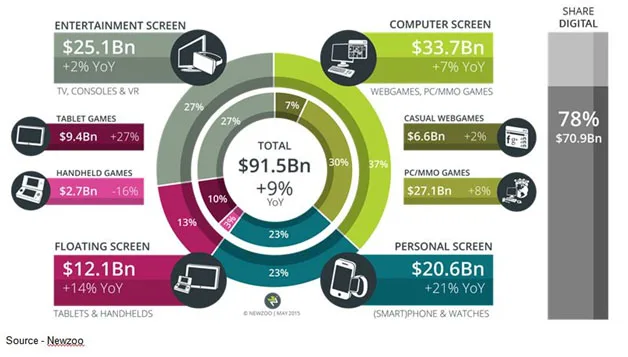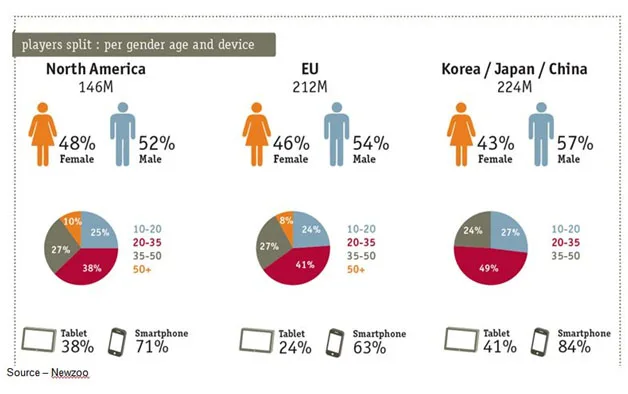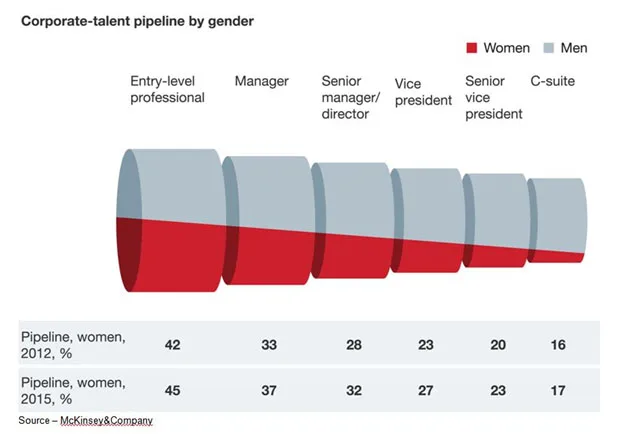It’s Time for Game Design to Follow the Players’ Lead

The good news about the GDC (Game Developers Conference) is that VR (virtual reality) headsets were everywhere.
Yes, I’m interested in the game play advances that are being made; but I’m more interested in seeing gaming advance into the 21st century like the rest of the M&E (media and entertainment) industry.
First there was the diversity furor of the Oscars and The Academy (Academy of Motion Picture Arts and Science) laid out a determined plan to level the playing field for women.
It just doesn’t seem as though the gaming industry has reached that point yet.
There’s a persistent, ugly, overly vocal knuckle-dragging minority in the community that thinks little things like gender, skin color, religion and lifestyle are important in defining the industry – developers, distributors, players.
All I can say is, “Why the hell does it matter?”
Actually, it is important … it does matter … it has to change!
Maybe with the rapid injection of VR into games it’s time to recognize the growing place of women and others in gaming so the industry can appeal to/sell more stuff to a broader audience.
Perhaps then girls and women can find it easier to embrace the freedom of digital play just as VR enhances the feeling of freedom and control.
After all, game play has always been about getting into your own private space and mastering your own universe. With VR gaming, that universe can be even more real and controlled by the viewer/player.
It was obvious at GDC that the appeal was equal for males and females. They just wanted to play.

Cell phones and social media made it possible for the industry to broaden gaming’s appeal.
Mobile games like Candy Crush Saga and Angry Birds are theoretically free but kids know they pay one way or the other.
With games like these that don’t require any heavy thinking, folks come to GDC to learn how to develop/market them in the hope of hitting the big time.
Real gamers only use them to keep their hand/eye coordination limber until they can get back to their console or computer to don their male persona and do battle in the League of Legends world.
According to a recent study, 56 percent of women over 44 have played the mobile games and 54 percent of them play them on their phone daily.
Franchise owners and analysts are discovering that there is a growing female crossover from casual to hardcore play – shooters, massive online role-playing – and they more than hold their own in any battle situation.
In addition to making money for a few, mobile games are important entertainment:
- take a trip in the car and it’s the best way to keep kids occupied
- fly on a plane and most are playing something on their laptop, tablet, phone
It’s no wonder that the U.S. video gaming represents a $24B industry (20+ percent of the global market),
That’s bigger than the movie, music industries … combined.
The “accepted” definition of a gamer – 17-year-old acne-faced kid playing Call of Duty – doesn’t actually mean much anymore. In fact, male gamers – age 10-25 – only represent a paltry 15 percent of the market, according to NewZoo.

On the other hand, the average female gamer has played for 13 years and many are becoming increasingly dedicated. The number of girls and women playing more than five days a week has grown steadily since 2011.
The greatest growth impact has been with the over 50 female crowd that grew more than 35 percent over the past year, accounting for nearly 45 percent of the playing community.

I’m not saying that the launch of Rise of the Tomb Raider – and its predecessors – had a defining effect on the shift, but it certainly didn’t hurt.
I know it helped the economy because we had to upgrade computer(s) to a new system with a ton of RAM and a souped-up AMD graphics card to play the game.
We’d stretched the life of the systems as long as possible and the newbies were well worth it!

More importantly, the females in the family liked the fact that Lara Croft wasn’t just used in the game as eye candy, decoration, a damsel in distress or someone who was there to be used/abused.
Not only is the quality of the game play and the realism of the graphics exceptional but the game actually presents a positive female. She’s a proactive, on-her-own survivor who doesn’t rely on cleavage and short shorts to handle the situation.
Secretly, I’m so happy our daughter isn’t into stupid stuff like Kim Kardashian: Hollywood!
Like most females, she doesn’t live in an airhead world and doesn’t exist to be assaulted. She can give/take with the best of them on the virtual battlefield.
The challenge developers are facing – which exists in every corner of the entertainment industry – is that most of the game builders are male (only 21 percent are women), while a growing majority of players are female
That has to change and it isn’t going to be easy or comfortable.
Last year’s LeanIn/McKinsey report highlighted the fact that there’s no easy path to diversity. In fact, it was a little depressing for them to say it was going to take 100 years.

But progressive companies and teaching institutions are trying to accelerate that time schedule.
STEM (science, technology, engineering and math) education has long been emphasized in most countries and is getting a lot more attention in the U.S.
Since girls and women seem to be very good at computing (look at their contributions in the industry–Lady Lovelace, Yvonne Brill, Grace Hopper and hundreds of others) they’re judged by their abilities/accomplishments rather than the length of their skirt.
Proactive programs by firms like Intel, Microsoft, Google, Facebook and many others as well as works like Lesley Chilcott’s CodeGirl film have stimulated females to consider the career.
It’s a lot more fun creating a game than developing security solutions and sealing system/program backdoors. (But then, foiling and helping capture hackers, whackers and cybercrooks does sound kinda’, cool.)
However, gaming is part of our cultural mainstream with millions of people playing your game every day; and along the way, you allow folks to choose to be male or female, gay or straight, any color.
That’s a lot of power.
Now that we can identify 52 percent of the players as women, developers need to include female characters; and frankly, no one should be better qualified to write what they know and what they understand than females.
I admit it, I sure don’t!
And with AR/VR, the new breed of developer is going to have even more opportunities to breathe a whole new level of excitement and game play opportunities for the rest of us who are simply … players.
The problem is, everything isn’t equal and change is always difficult.
It’s not going to be quick and simple to achieve but as Ted said, “We’re both stumbling around together in this unformed world, whose rules and objectives are largely unknown, seemingly indecipherable or even possibly nonexistent, always on the verge of being killed by forces that we don’t understand.”
# # #